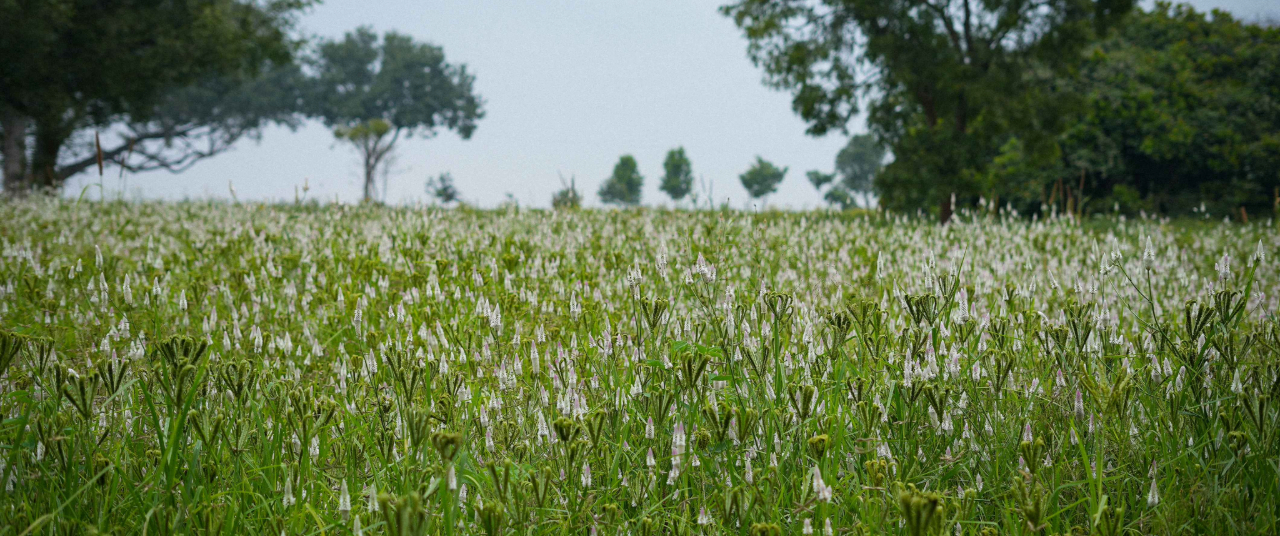Being mindful of the presence of wild animals can help conserve agrobiodiversity and reduce crop loss






Editor’s note: To know Rama Ranee is to learn about the power of regenerative practices. The yoga therapist, author and biodynamic farmer spent three decades restoring land in Karnataka, envisioning it as a forest farm in harmony with nature. In ‘The Anemane Dispatch’, a monthly column, she shares tales from the fields, reflections on the realities of farming in an unusual terrain, and stories about local ecology gathered through observation, bird watching—and being.
On a boulder to the north of the Bannerghatta National Park, facing the Suvarnamukhi Hills, lies the Anemane Farm. A tarred road, once an old dirt track, snakes down from our village Kasaraguppe to the national park 4 km away, and Bengaluru city thence. Bamboo thickets cover much of the hill sides. Taloora Lac trees (Shorea roxburgii, or ‘Jalari’ in Kannada) rear their evergreen crowns among bare rocks.
The farm shares the national park’s topography and natural vegetation; the average elevation is about 900 m, the GPS coordinates being latitude = 12°48'45.85" N, and longitude = 77°34'02.73". Among India’s largest scrub forests, Bannerghatta serves as a vital link between the Eastern and Western Ghats, and is critical for the conservation of many threatened large mammals. The assigning of national park status has facilitated the restoration of green cover, and consequently, a resurgence of wildlife since the 1970s.
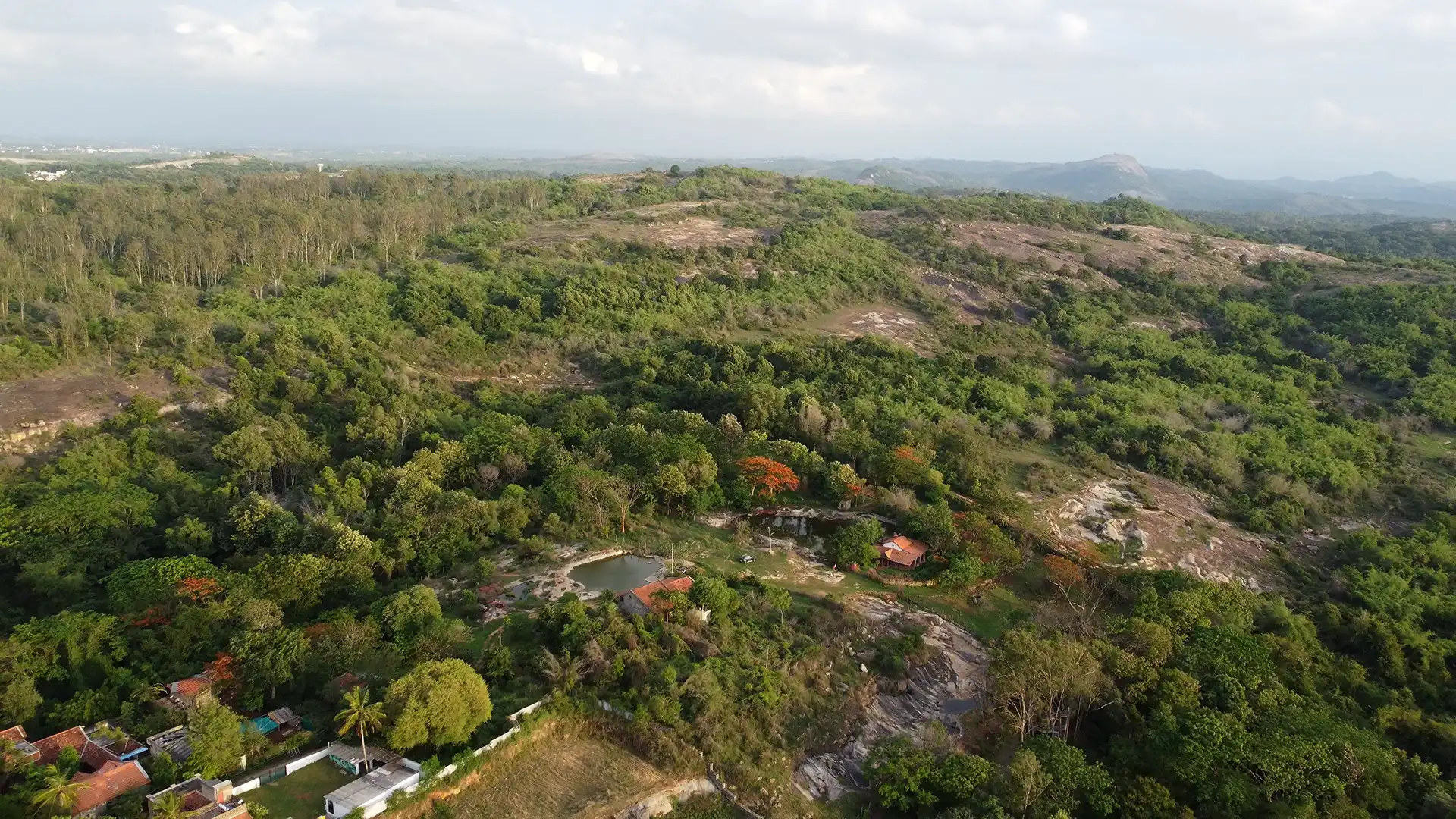
Significantly, it is one of the oldest habitats for the Asian elephant (Elephas maximus).
We are privileged to share this unique landscape with elephants and other wildlife. However, their impact on land use and farmers’ livelihoods is immense. Over the years, a benign acceptance of elephant presence near human habitations has changed potentially into conflict, chiefly due to damage to crops and threat to human lives.
Significantly, it is one of the oldest habitats for the Asian elephant (Elephas maximus).
The causes are complex, and beyond the likes of us to discern. As farmers, our concerns are immediate and practical: it is difficult to predict what the next herd or individual may or may not do or eat. Every season is an experiment and an adventure. It has taken 30 years and a fair measure of resources to arrive at a list of ‘safe-crops’ and some realistic expectations.
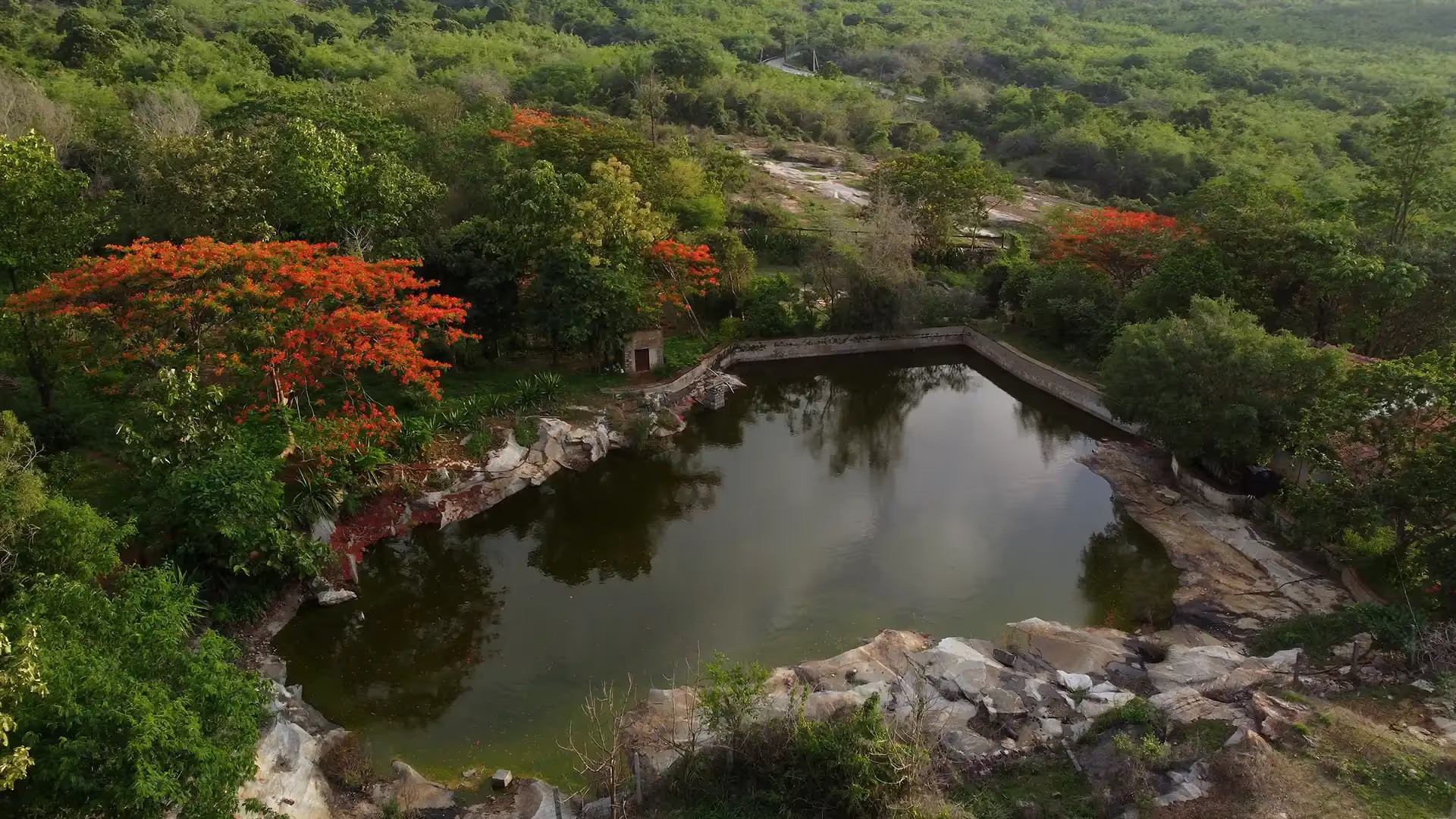
This is how a typical morning at Anemane unfolds: The mist lifts, unveiling fields of citrus. I wait for the sun’s rays to reveal paths, not wanting to step into the unknown. Elephants are amorphous, melting into the vegetation. There are a couple of young tree branches on the ground and heaps of ripe figs on fresh elephant dung. The old Cluster Fig tree has withstood such elephant forays and is none the worse for it. As for the rest of the farm, it has undergone waves of transformation with emerging patterns of elephant activities and behaviour.
Like other communities at the forest’s edge, Kasaraguppe, too, has its share of encounters with these animals and continues to grapple with them. I wondered how farmers in the past managed to put down their roots, raise crops and families. An old-timer whose services we fortunately enjoy opened a window to those bygone times: Rajappa’s was one among eight families which migrated from Tamil Nadu in the late 1950s, in search of greener pastures. The land, as it turned out, was a hilly wilderness. Bamboo thickets were cleared and terraces wrought from slopes for fields of ragi, groundnut, flowers and paddy in the valleys. There were grasslands for livestock on the hills. As time turned under the yeoman’s plough, there was contentment—though leopards posed a threat to domestic animals, and wild pigs restricted their choice of crops.
Also read: At Ammachi’s farm, the impossible can be achieved—and made profitable
The arrival of the mighty beasts
In 1971, the Bannerghatta National Park was inaugurated. This event was associated with the arrival of elephants to Kasaraguppe by the farmers. Initially, it was a rare occurrence; an occasional herd would pass through, peacefully. Once Chikka Bodappa, one of Rajappa’s fellow villagers, planted ragi with great care. That year, an elephant strayed into his field and tasted a small clump of the millet. Bodappa’s yield was ten times above the normal amount, which he attributed to the blessings of the visitor. Its pad mark was worshipped with reverence, and the villagers treated to a festive lunch. This set the trend for other farmers who began to invoke the blessings of the ‘sacred’ elephant in the hope of bountiful harvests. Rajappa ruefully admitted that there was not a single household that escaped the magical spell of the myth—and Chikka Bodappa’s good farming methods were disregarded in the process.
As the pad imprints in fields multiplied, the farmers despaired and sought respite from elephants.
As the pad imprints in fields multiplied, the farmers despaired and sought respite from elephants. The ragi and paddy seasons required utmost vigil, and the families banded together, braving rain and shine to fend the animals off, sleeping in the fields for days. There was a growing urge to give up farming. Such was the scenario when we began to farm.

Also read: A man dreamt of a forest. It became a model for the world
Āne with a taste for avarekai
The ten-acre land in our possession was degraded: bald rocks dotted an undulating terrain, pockmarked with shallow granite quarries. Fallow fields baked under the sun, bleached from generous inputs of chemical fertiliser with a sprinkling of granite dust. The soil was shallow and varied in depth, susceptible to erosion. The Cluster Fig in the valley was a lone sentinel over an elder’s grave. Rain brought to life streams; a swift little one gurgled along the edge of our land, and muddy cascades turned the valley into a marsh, often washing the fields away.
Restoring soil fertility became our primary goal. Defunct quarries turned into ponds to harvest runoff from the hill. Seedlings of local varieties such as the Pongam tree (Pongamia glabra, or ‘Honge mara’ in Kannada) were raised and planted along the periphery to arrest erosion and build up organic matter. Teak and silver oak in the interspaces of fields served as wind breaks. The edges bordering the forest were left alone for native species to revive.
Efforts at regenerating the land were rewarding, but with them came unforeseen consequences: our ponds served as watering holes, and the wooded valley— sheltered by bamboo and the wilderness bordering the forest—was virtually an elephant ‘camp’.
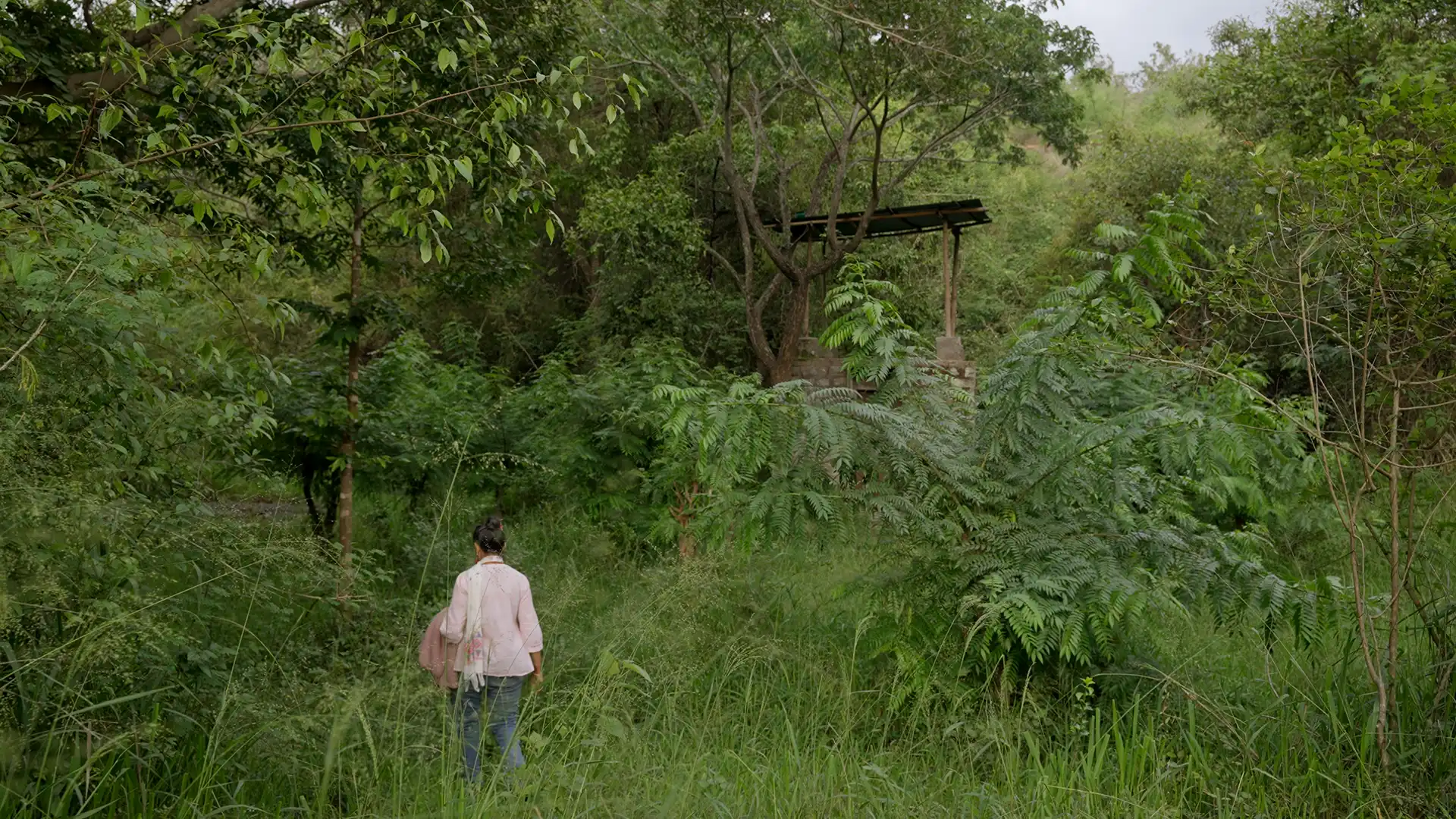
Manure infused life into the depleted soil, sustaining guava, papaya, lemons, and pomegranates, while contributing a new crop of trees, Maha-neem (Melia dubia, or ‘Kaadu Bevu’ in Kannada). The papayas were a sweet success but only briefly; the first time an elephant herd stomped into the fields, all the papaya stems were snapped. None were eaten. After the occurrence of similar episodes, we realised that elephants destroy fine stemmed trees like Moringa and Hummingbird (Sesbania grandiflora, or ‘Agase Mara’ in Kannada).
Efforts at regenerating the land were rewarding, but with them came unforeseen consequences: our ponds served as watering holes, and the wooded valley— sheltered by bamboo and the wilderness bordering the forest—was virtually an elephant ‘camp’.
The saga of a fruit farmer’s unfulfilled dreams further unfolded with a special variety of banana, Nanjangud rasabale. They never saw the light of the day! An elephant in a banana field is like a kid in a candy store. It was of little consequence that the entire village had gathered to chase them away.
Coconut palms met a similar fate. The first flush of flowers caught the elephants’ superior olfactory sense. It was a carnage: within a year, a hundred palms were mere shells left to wither away. When Ratnagiri alphonso mangoes began to fruit, every elephant that passed by helped itself to not just the fruits, but also the branches—possibly to rub itchy backs or merely on a whim. Along with the mangoes went guavas and sapotas, too. After 20 years of trying to revive the stunted, damaged trees, we finally cut them down to prevent further raids.
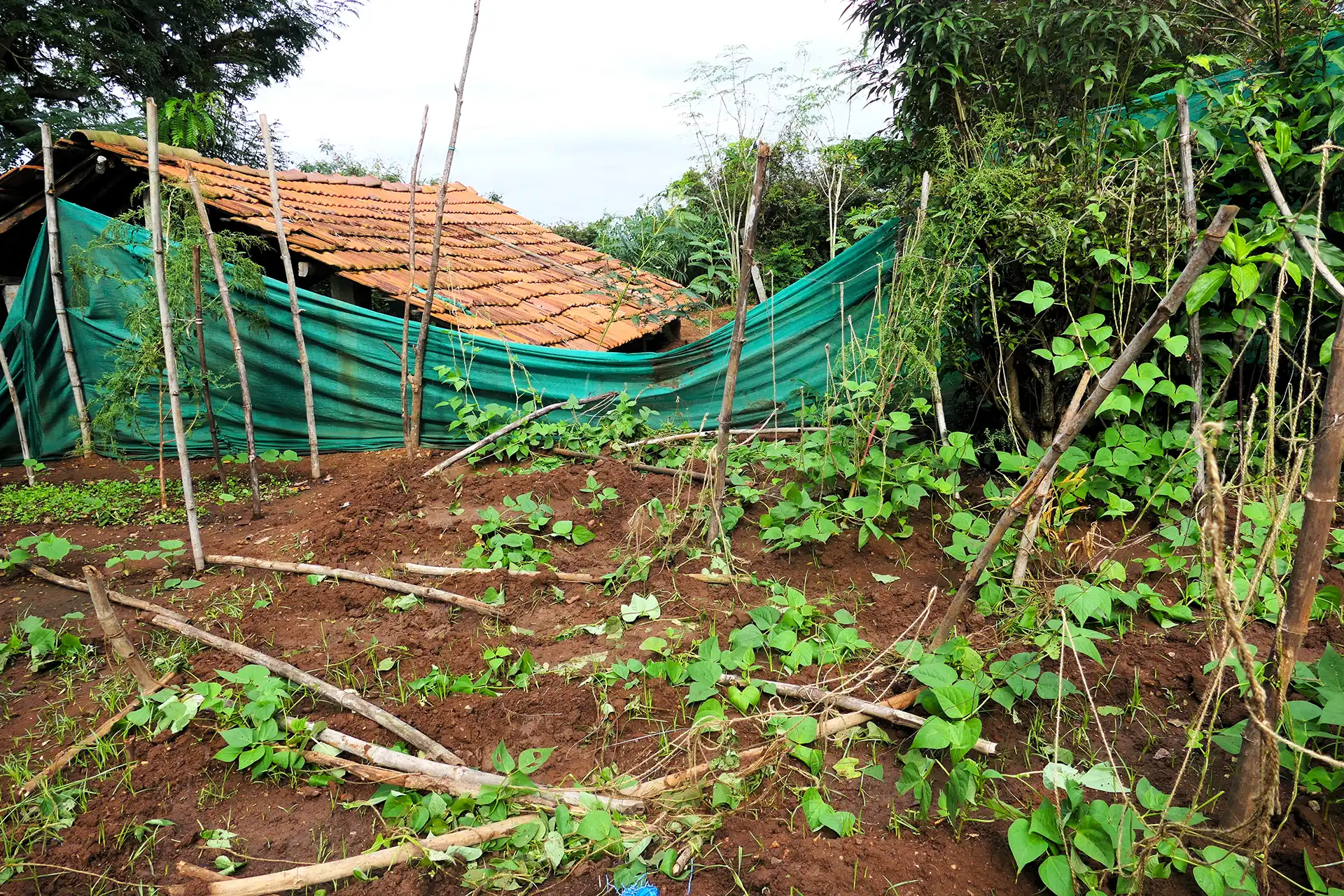
An elephant’s playfulness is further incited by water bodies and slush. Our paddy field has been akin to a playground. One utterly dark, rainy night, the silence was shattered by deep groans and roars; the earth trembled beneath our feet, literally. The next morning, we saw that the erstwhile paddy field had turned into pools of sludge and mush. The banks had all but disappeared. The only evidence of the night’s revelry attributable to elephants was the scoured floor and imprints of bodies.
Elephants are vigorous post-monsoon, when paddy and ragi ripen. With some luck and nightly vigils, many households managed a harvest, prompting us to sow seeds for several years. Our hopes were raised periodically by the forest department’s assurances of elephant-proofing with solar fencing, trenches, and massive rubble walls. At best, these offered a short reprieve.
Once the other farmers gave up, it became difficult to sustain these crops. Our final attempt was a small patch of paddy grown according to the System of Rice Intensification (SRI) which would have led to a bountiful yield had a lone elephant bypassed the field. We retrieved some of the stalks and piled them up in a rick for the cows. A few days later, the rick was a messy heap—the paddy straw pulled out and consumed, while the sorghum was left uneaten. The lone elephant had discovered the way from the paddy field via the lemons to the rick; not much of a distance, but until then, it was an untrodden path.
Paddy, ragi and fruit farming seemed fraught with risks, so we directed our efforts to millets, legumes, vegetables, flowers, and varieties of citrus. For four blissful years, the fields hummed with bees. Gourds, tomatoes, cucumbers, ladies’ fingers, marigolds, and chrysanthemums thrived, until an elephant acquired a taste for sorghum and avarekai (hyacinth beans), and seemingly memorised our planting calendar as well. Winter and early summer vegetables, crucifers, gourds and tomatoes were sought after. There were many styles of operation, not necessarily a rampage. To explore the contents of a covered patch, a particular tusker punctured the net neatly and then barged in to feast on cabbages.
Also read: No monkeying around on this kiwi farm
Re-defining what success means
Our options have been whittled down to citrus, spices, aromatic herbs, medicinal plants and flowers. Yet, the success of ashwagandha, with immense healing properties and importance in Ayurveda, was short-lived. Just as they were fruiting, the plants were neatly uprooted, and mature roots—the most valued part—eaten.
Nutritional needs otherwise accessible in a natural environment are supplemented through successful forays into farms. Elephants mark territories for specific crops and establish pathways though farmland and forest.
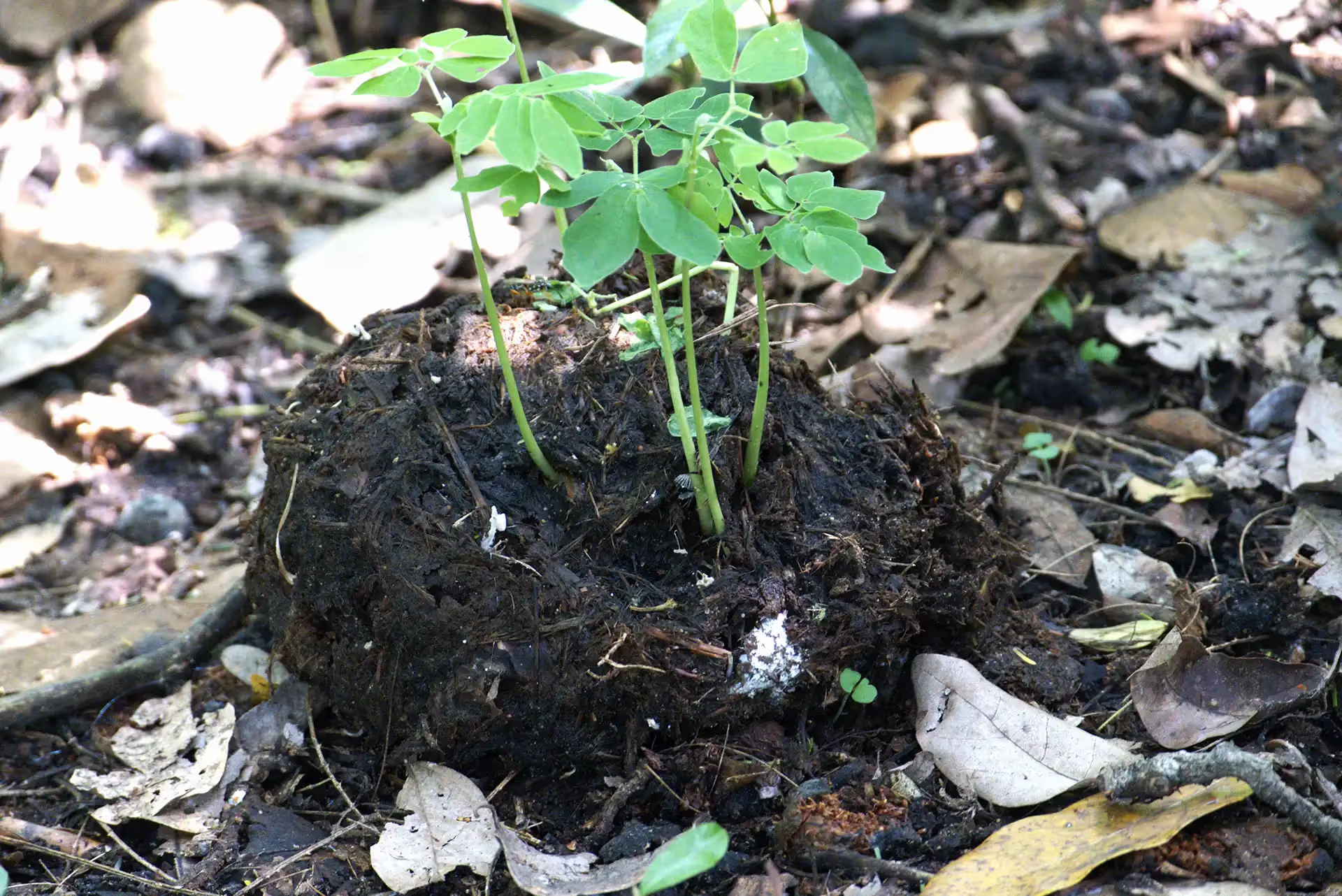
Variations in foraging behaviour—dietary preferences, if one may call them that; the number of individuals; the composition of the herd in terms of age and gender, from stealthy, lone night raiders at touching distance, to a club of boisterous young bulls are all factors which determine the extent of damage. Recently, we were the target of three young bulls who met at the edge of our farm and branched out towards preferred dining. One of them had a penchant for our tamarinds. Such behaviour is not only risky, but I expect, problematic, too, with associated health risks, as it disrupts the elephants’ normal habits of foraging in the wilderness.
Elephants are a part of the agricultural landscape on forest edges, enriching the soil with their dung, eliminating certain plants, while introducing some through seed dispersal, thus contributing to the diversity.
Three decades of appraisal has yielded the finalists which have stood the test of time and might even fulfill their life cycle. Among the cultivated plants, citruses are the front runners. Native trees such as Maha-neem, Taloora Lac, and Flame of the Forest (Butea monosperma), varieties of Terminalia (such as Arjuna, Crocodile Bark Tree, Black Myrobalan and Belleric Myrobalan), bamboo, shrubs including wild edibles, have flourished unbridled and untouched by elephant activity, turning the land into a green haven.
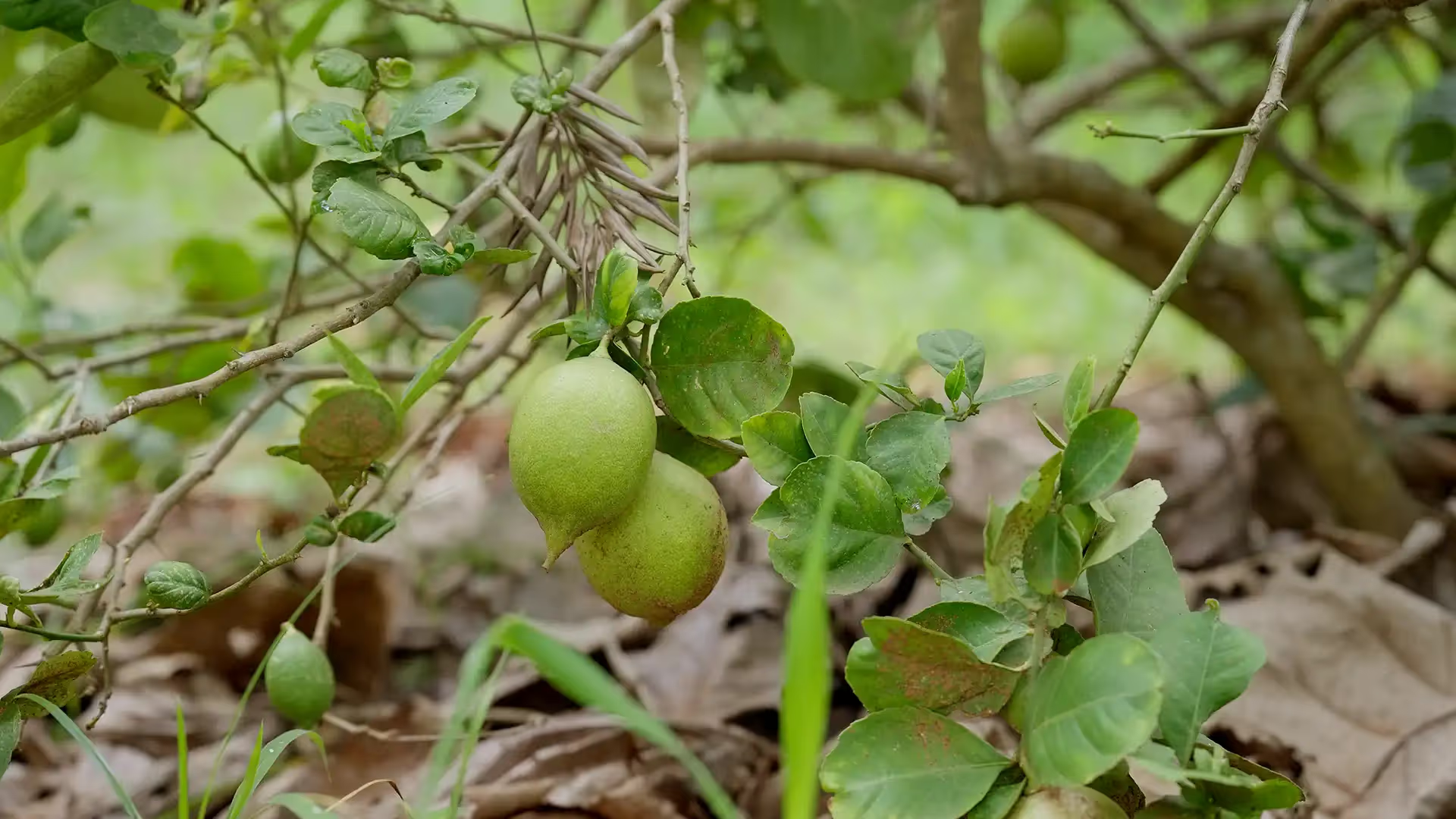
If farming is all about market success, then we are utter failures. The choices we made, some by intent and a few out of ignorance, have determined the outcomes. The prism of success, in economic terms, offers a narrow perspective. In the real sense, regenerative farming ensures long term food security. It contributes towards support systems that enable life. Restoration of soil fertility and conservation of agrobiodiversity through ecologically sensitive farming, integrating holistic practices, have been our chief concern. In that respect we have evolved, if the diversity of birdlife—more than 145 species in an area of 0.05 sq km—is any indication.
Elephants are a part of the agricultural landscape on forest edges, enriching the soil with their dung, eliminating certain plants, while introducing some through seed dispersal, thus contributing to the diversity. For instance, Wild Guava (Careya arborea, or ‘Goujal Mara’ in Kannada), a favoured elephant food that is disbursed by them, is well known to local folk health traditions. Recent studies explore its medicinal potential.
Being mindful of elephant presence and foraging behaviour can help farmers make better choices in terms of crops and planting cycles, thereby reducing losses while conserving agrobiodiversity—the key to sustainability. We are witnessing an increasing fragmentation of wild spaces and forests. Sharing a border with a forest makes us even more aware of our role as a stepping stone and a habitat for a host of organisms, big and small. A forest farm committed to ecologically sensitive farming can serve a vital function.
{{quiz}}
Artwork by Khyati K
Explore other topics
References

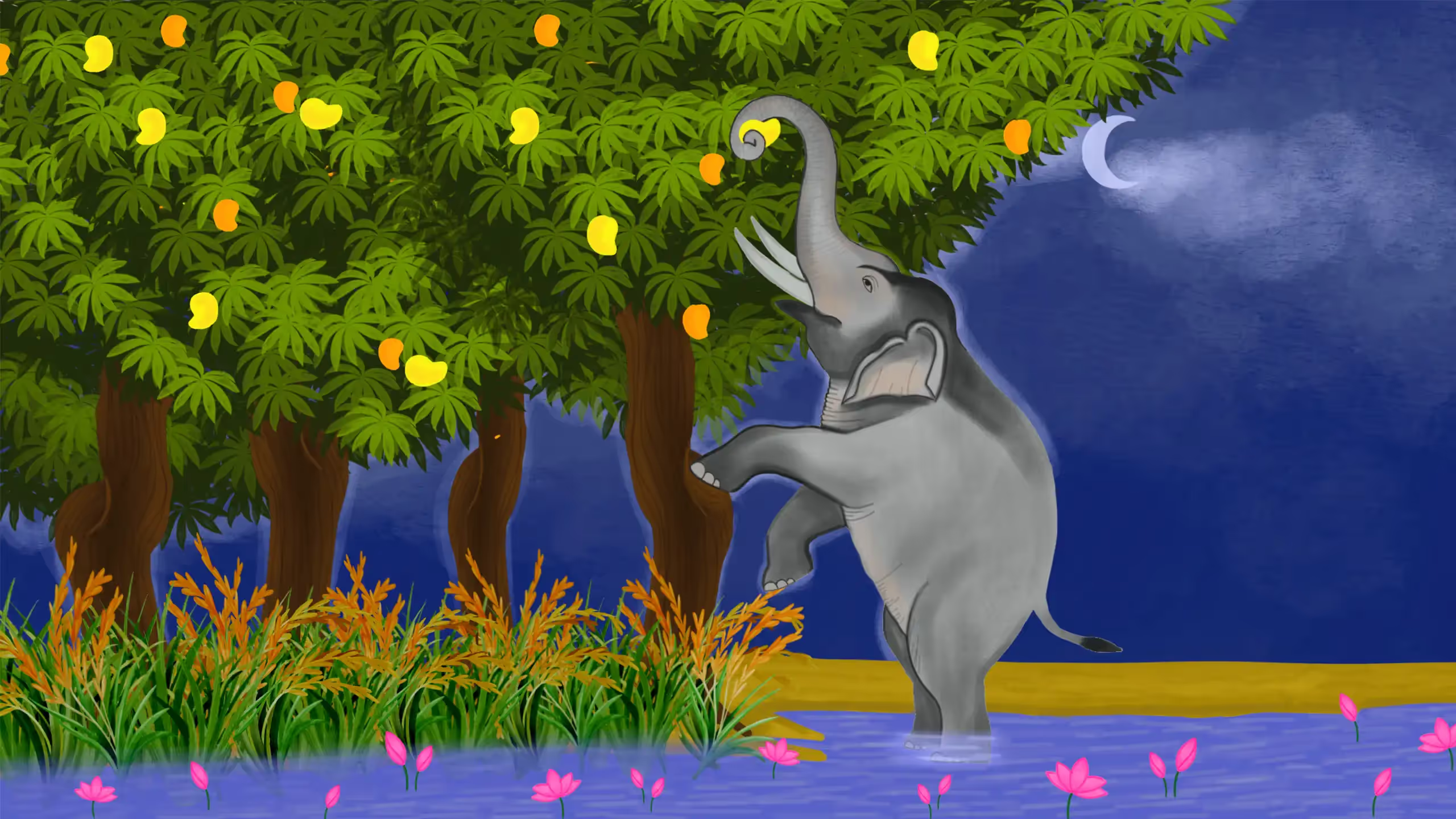


.jpg)

.avif)

.png)
.png)

